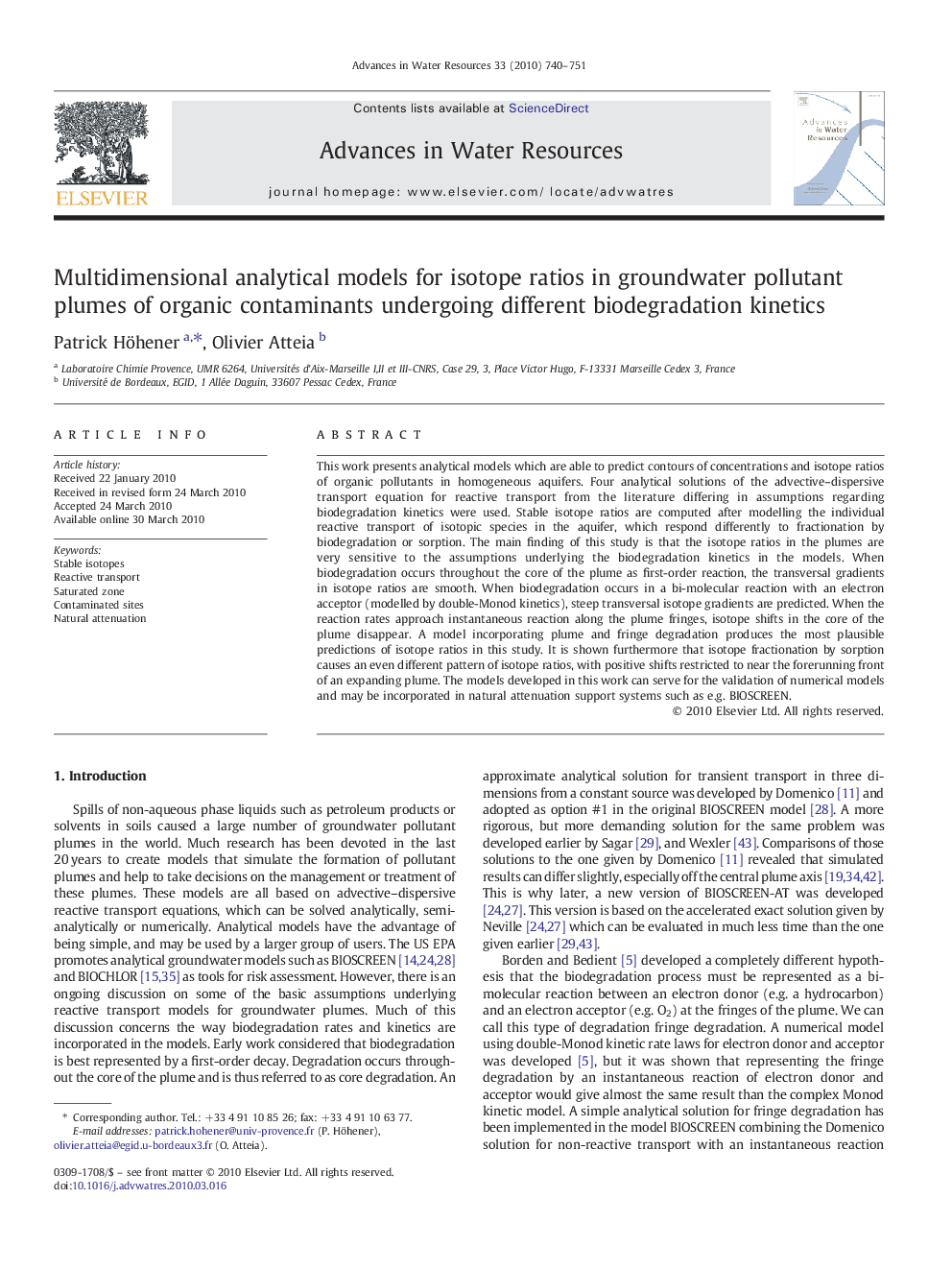| Article ID | Journal | Published Year | Pages | File Type |
|---|---|---|---|---|
| 4526448 | Advances in Water Resources | 2010 | 12 Pages |
This work presents analytical models which are able to predict contours of concentrations and isotope ratios of organic pollutants in homogeneous aquifers. Four analytical solutions of the advective–dispersive transport equation for reactive transport from the literature differing in assumptions regarding biodegradation kinetics were used. Stable isotope ratios are computed after modelling the individual reactive transport of isotopic species in the aquifer, which respond differently to fractionation by biodegradation or sorption. The main finding of this study is that the isotope ratios in the plumes are very sensitive to the assumptions underlying the biodegradation kinetics in the models. When biodegradation occurs throughout the core of the plume as first-order reaction, the transversal gradients in isotope ratios are smooth. When biodegradation occurs in a bi-molecular reaction with an electron acceptor (modelled by double-Monod kinetics), steep transversal isotope gradients are predicted. When the reaction rates approach instantaneous reaction along the plume fringes, isotope shifts in the core of the plume disappear. A model incorporating plume and fringe degradation produces the most plausible predictions of isotope ratios in this study. It is shown furthermore that isotope fractionation by sorption causes an even different pattern of isotope ratios, with positive shifts restricted to near the forerunning front of an expanding plume. The models developed in this work can serve for the validation of numerical models and may be incorporated in natural attenuation support systems such as e.g. BIOSCREEN.
